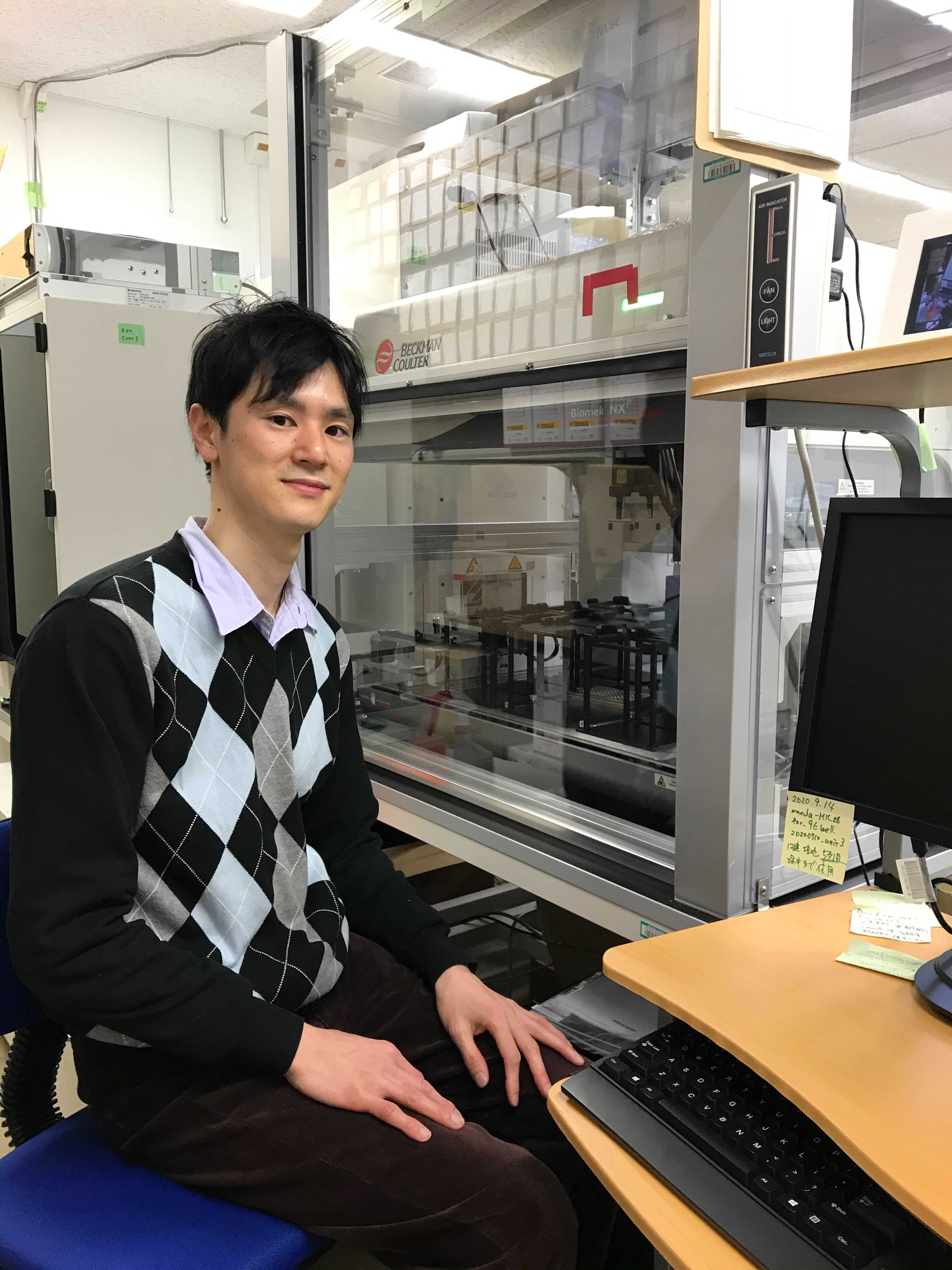
 |
| Name | Tomoya Maeda |
| Education history | Ph.D. (Doctor of engineering), Department of Bioengineering, Tokyo Institute of Technology |
| Work Experience |
04/2012-06/2012
Postdoctral researcher at Tokyo Institute of Technology, Department of Bioengineering
07/2012-08/2013
Postdoctral researcher at Forschungszentrum Juelich GmbH, Institute of Bio- and Geosciences, IBG-1: Biotechnology
09/2013-12/2015
Researcher at Research Institute of Innovative Technology for the Earth, Molecular Microbiology and Biotechnology group
01/2016-03/2018
Postdoctral researcher at RIKEN, Quantitative Biology Center
04/2016-01/2021
Special postdoctral researcher at RIKEN, Center for Biosystems Dynamics Research
02/2021
Assistant Professor at Hokkaido University, Research Faculty of Agriculture
|
| Diploma | Doctor of Engineering 2012 Tokyo Institute of Technology |
|
|
| * More information... |

*Featured Research List
1. Maeda, T., Sakai, T., and Wachi, M. The Corynebacterium glutamicum NCgl2281 gene encoding an RNase E/G family endoribonuclease can complement the Escherichia coli rng::cat mutation but not the rne-1 mutation. Bioscience, Biotechnology, and Biochemistry 73, 2281-2286 (2009).>>PubMed
2. Maeda, T., and Wachi, M. Corynebacterium glutamicum RNase E/G-type endoribonuclease encoded by NCgl2281 is involved in the 5' maturation of 5S rRNA. Archives of Microbiology 194, 65-73 (2012). >>PubMed
3. Maeda, T., and Wachi, M. 3' Untranslated region-dependent degradation of the aceA mRNA, encoding the glyoxylate cycle enzyme isocitrate lyase, by RNase E/G in Corynebacterium glutamicum. Applied and Environmental Microbiology 78, 8753-8761 (2012). >>PubMed |
 |
4. Uhde, A., Youn, J.W., Maeda, T., Clermont, L., Matano, C., Kraemer, R., Wendisch, V.F., Seibold, G.M., Marin, K. Glucosamine as carbon source for amino acid-producing Corynebacterium glutamicum. Applied Microbiology and Biotechnology 97, 1679-1687 (2013). >>PubMed
5. Maeda, T., Tanaka, Y., Takemoto, N., Hamamoto, N., and Inui, M. RNase III mediated cleavage of the coding region of mraZ mRNA is required for efficient cell division in Corynebacterium glutamicum. Molecular Microbiology 99, 1149-1166 (2016). >>PubMed
6. Maeda, T., Tanaka, Y., and Wachi, M., and Inui, M. Polynucleotide phosphorylase, RNase E/G, and YbeY are involved in the maturation of 4.5S RNA in Corynebacterium glutamicum. Journal of Bacteriology 199, e00798-00816. (2017). >>PubMed
7. Maeda, T., Tanaka, Y., and Inui, M. Glutamine-rich toxic proteins GrtA, GrtB, and GrtC together with the antisense RNA AsgR constitute a toxin-antitoxin-like system in Corynebacterium glutamicum. Molecular Microbiology 108, 578-594 (2018). >>PubMed
8. Maeda, T., Takaaki, H., Sakata, N., Sakai, A., and Furusawa. C. High-throughput identification of the sensitivities of an Escherichia coli ΔrecA mutant strain to various chemical compounds. The Journal of Antibiotics 72, 566-573 (2019).>>PubMed
9. Maeda, T., Iwasawa, J., Kotani, H., Sakata, N., Kawada, M., Horinouchi, T., Sakai, A., Tanabe, K., and Furusawa, C. High-throughput laboratory evolution reveals evolutionary constraints in Escherichia coli. Nature Communications 11, 5970 (2020). >>PubMed
10. Maeda, T., Koch-Koerfges, A., and Bott, M. Relevance of NADH dehydrogenase and alternative two-enzyme systems for growth of Corynebacterium glutamicum with glucose, lactate, and acetate. Frontiers in Bioengineering and Biotechnology 8, DOI: 10.3389/fbioe.2020.621213 (2021). >>PubMed
*Reviews
1. Furusawa C., Horinouchi, T., Maeda, T. Toward prediction and control of antibiotic-resistance evolution. Current Opinion in Biotechnology 54, 45-49 (2018).>>PubMed
2. Horinouchi, T., Maeda, T., and Furusawa, C. Understanding and engineering alcohol-tolerant bacteria using OMICS technology. World Journal of Microbiology and Biotechnology 34(11), 157. (2018). >>PubMed
|
|
